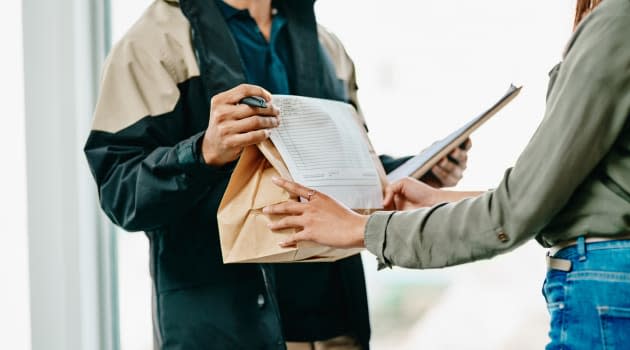Slow Delivery, Cold Food Top Food Delivery Complaints

Food delivery apps make dining in more convenient than ever, but slow delivery, cold food and drivers who secretly sample some of the items can all put a damper on the experience, a new survey shows.
Food service distributor US Foods sought to gain insight into the food delivery landscape by surveying 1,518 adults who have used a delivery app at least once, along with 497 adults who have delivered food for an app-based service at some point.
One thing they learned is that those who use food delivery apps use them frequently. In fact, the average delivery app user has two different apps and uses them three times each month, the survey found. The most popular food delivery app, according to the study, was Uber Eats, followed in order by Grubhub, DoorDash and Postmates.
While many consumers have embraced the idea of using an app to get their meals brought to them, they will only wait for so long. The largest percentage of respondents — 31% — said 30 minutes was the longest they would wait for food to be delivered, followed by 27% who would be willing to wait 40 minutes. Meanwhile, 23% were OK with waiting an hour or more, and 7% said they would only wait a maximum of 20 minutes.
Customers fear cold, partly-eaten food
The top frustration among delivery app users was that food is not always delivered warm or fresh, a complaint cited by 17% of respondents; that was similar to the 16% who were critical of the fact that food was delivered late. Among other issues, 12% griped about incorrect orders or restaurants ignoring special instructions, 11% were irritated by inconsistent prices, 10% were bothered by food getting shaken around during delivery, and 9% were annoyed by inconsistent or limited menus.
Another concern among some customers had to do with the lack of control they have over the delivery person’s behavior. Specifically, 21% of consumers surveyed said they have suspected a delivery person of eating some of their food.
Their suspicion may not be too far-fetched, though, as more than a quarter — 28% — of deliverers admitted that they have taken some of a customer’s food in the past. To prevent that from happening, an overwhelming 85% of consumer respondents said they would prefer it if restaurants put delivery food in tamper-proof containers.
How much is food delivery worth?
The survey also suggested consumers have their limits on how much they will pay. Approximately 37% said the most they would pay for the delivery fee, any other service fees and a tip combined is $6 to $10. At the same time, 35% would only pay $5 or less, and 28% would spend between $11 and $15. When it comes to the tip alone, respondents on average considered $4 to be appropriate.
While the convenience of using food delivery apps can be tempting, make sure you’re budgeting for it. A good practice it to track how often you use these services, since you may be spending more on having food brought in than you think.
You might also want to compare what you’re spending on food delivery to the amount you’d likely spend on food if you bought groceries and cooked on your own. And if you are going to dine out frequently (or regularly get restaurant food delivered), your money may go further if you take advantage of a credit card that offers rewards for doing so — just make sure you pay off the entire balance each month.
